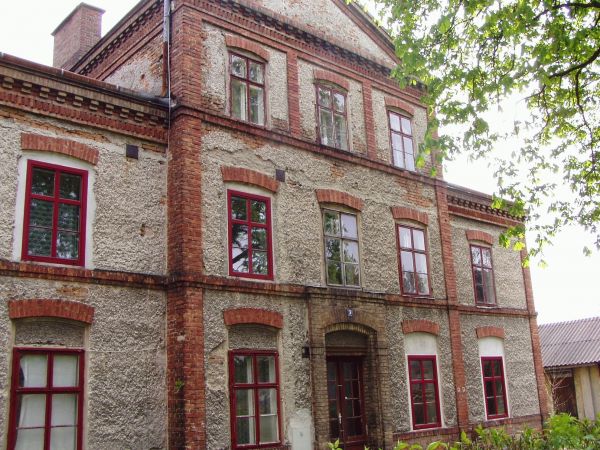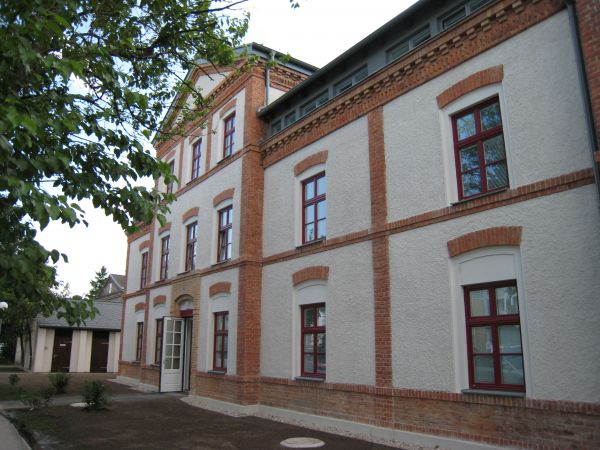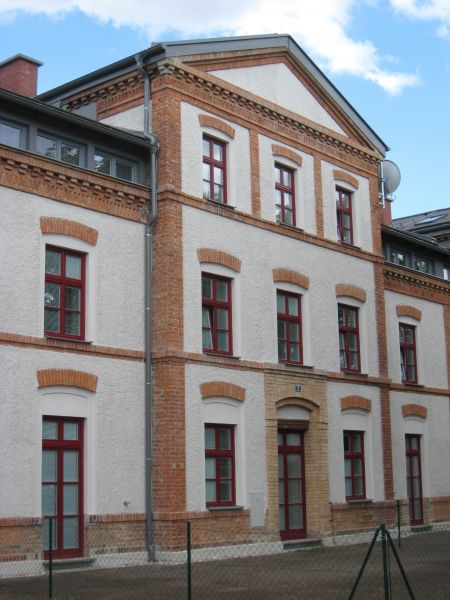Reconstruction of residential buildings "Tschechenring": ecologically reconstruction of monumental-protected residential buildings for workers (1880) in Felixdorf
Short Description
Status
completed
Summary
The complex of residential buildings at “Tschechenring” is optimally embedded into the existing infrastructure due to its central location in the municipality of Felixdorf. The single buildings enclose a wide green area in their middle, which ensures an optimal microclimate due to its dimension and the existing old tree. The aforementioned location factors make this complex of residential buildings very attractive and are a good argument in favor of an advanced renovation of the complex.
Starting point for the refurbishment decision was the necessary preservation work on the complex of residential buildings. The old-fashioned floor plans as well as the substandard flats led to the decision of the municipality of Felixdorf to start an advanced renovation project. A basic condition of the renovation project is the building substance that is monument-protected, which causes special measures and extra costs. The municipality of Felixdorf as builder attempted to realize an ecologically high-quality renovation in coordination with the interests of the housing subsidies of the Federal State of Lower Austria, considering requirements for listed buildings as well as comfort requirements.
The realization period for part A of the project (consisting totally of three parts A, B and C) was October 2005 - June 2007. Part B and C will be renovated following the same concept. The starting point for the renovation of part B was October 1st 2009, after the Federal Government gave its OK for the subsidies on January 19th 2009. Part B was finished in spring 2011, because of delays due to bad weather conditions.
The renovation of part C could be started in 2011 after the inhabitants of this building part had been resettled. Completion of works is planned for spring 2013. Delays were due to the long time it took for moving the inhabitants and could not be influenced by the builder.
Apart from preparatory work like demolition works, pipe trenches, inlets, the following measures were accomplished:
- extension of usable floor area by attic development
- energetic optimization of the thermal envelope (complex internal insulation due to monument-protected facade)
- exchange of windows: Installation of certified wooden-windows (part A: U=1,1; part B and C triple glazing: U-Value glass: 0,7 W/m2K, psi 0,034 W/mK) instead of plastic windows
- installation of a comfort ventilation
- use of building materials from renewable raw materials for interior fittings
- installation of a wood pellet heating system.
The high requirements for the renovation of residential buildings from the late 19th century (comparable with workers' housing estates of the 1930s) require a new handling of renovation processes, in order to keep existing qualities of the buildings and at the same time assure an ecological standard up-to-date and meet the needs of the housing market. One of the central challenges is to achieve a cost structure competitive to that from new buildings. With the choice of the measures for this renovation project, the persons in charge of this project want to show that ecologically optimized renovation projects can meet the market trends and can be realized within a range of justifiable costs. Crucially are amongst others the framework conditions of housing subsidies, here the funding of the Federal State of Lower Austria made this project possible. The renovation concept developed in the context of the demo project is a best-practice example for further projects of this kind. A respective change of the housing subsidies of Lower Austria is being discussed.
Aims and results:
- clear reduction of use of energy and material
- intensified use of renewable of energy, especially solar thermal energy
- more and efficient use of renewable and/or ecological materials
- consideration of social aspects and increase of the quality of life
- comparable costs to conventional building methods and therefore high market potential (prices per m2).
Project Images
Terms of use: The pictures listed underneath the header “Project Pictures” originate from the projects in the frame of the programmes City of Tomorrow, Building of Tomorrow and the IEA Research Cooperation. They may be used credited for non-commercial purposes under the Creative Commons License Attribution-NonCommercial (CC BY-NC).
Project Partners
Applicant
Ing. Günther Straub
Marktgemeinde Felixdorf
On-site building inspection and project management
Gemeinnützige Bau- und Wohnungsgenossenschaft "Wien Süd" - GesmbH
Hr. Ing. Eisenmenger, Fr. Bmst. Ing. Weber
Project or cooperation partner
- Bmstr. Ing. Günter Spielmann
stadtbau - DI Georg Tappeiner
Ökologie-Institut - DI Dr. Bernhard Lipp, Ing. Mag. Maria Fellner
IBO



